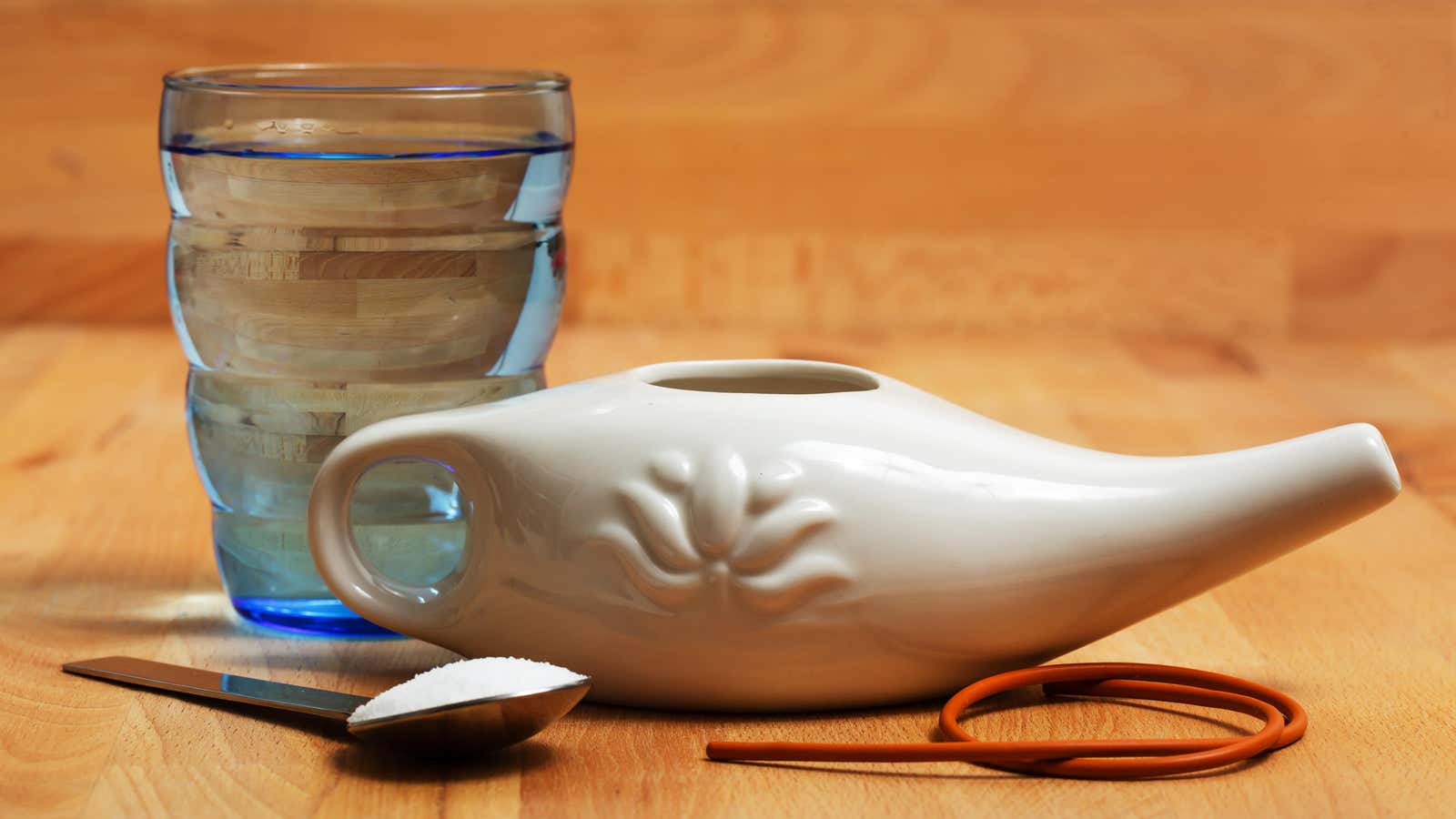Why Rinsing Your Nose Can Help With COVID Infection

In a recent study , rinsing the nose twice a day was found to reduce the severity of COVID-19 symptoms. While the study in question had some pretty serious flaws, including a small sample size and lack of a proper control group, the researchers are “probably on the right track,” said Mas Takashima, an ENT specialist at Houston Methodist Hospital . unrelated to research. “Nasal lavage is what we usually recommend to our patients with any nasal or sinus infection.”
This includes colds, flu, and allergies, for which there is some evidence that rinsing the nose can be an effective way to reduce the severity of symptoms. By that logic, it makes sense that nasal lavage could be a strategy to reduce the severity of COVID-19 symptoms.
Nasal irrigation may be helpful for upper respiratory tract infections
Nasal irrigation works by using a saline solution to rinse the sinuses. This flush has the double benefit of getting rid of all the mucus, which will help you feel better, and it also gets rid of any viruses or bacteria that are there. Because many viruses that cause upper respiratory tract infections, including COVID-19, tend to replicate in the sinuses, getting rid of them with nasal irrigation can help reduce the overall viral load, which is known to help with symptoms. severity.
“Because the SARS-CoV-2 virus replicates in the nose and continues to replicate in the nose, in theory it should work,” said Katherine Troisi, an epidemiologist at UTHealth School of Public Health , who was not associated with the study.
Washing out the mucus also has the added benefit of reducing any potential secondary infections, as the mucus provides an ideal environment for bacteria to grow. “If you have an open sinus that is constantly circulating, it doesn’t get infected as often as it is blocked,” Takashima said.
Tips for Effective Nasal Wash
In the COVID-19 study, researchers asked participants to flush their noses with either sodium bicarbonate solution or saline with iodine added, using a pressure nasal irrigation system where the solution is injected into the nostrils. The researchers found no difference between the two in terms of results, the main limitation being that it was a very small sample size of only 79 participants.
As a practical matter, it’s reasonable to assume that most people will benefit from a simple saline solution, which they can either buy pre-mixed in small packages or make their own from a mixture of salt and baking soda . This is a standard solution that can help with allergies, colds and flu.
For the nasal irrigation system, you can use either a neti pot into which you pour the solution into one nostril, or a nasal irrigation bottle into which you inject the solution into one nostril. Both should be available at your local pharmacy or can be ordered online.
It’s important to use clean water, preferably distilled or boiled, as you don’t want any harmful bacteria in it, but you want to avoid using plain water. “It hurts when there’s no salt in there,” Takashima said. To prevent contamination, be sure to wash the bottle after every use and change it every few months or when you get sick. “If you have an active sinus infection, you’ll want to get rid of this bottle,” Takashima said once you’ve recovered, as there may still be bacteria or viruses in it.
There is also a learning curve associated with nasal irrigation. “It seems funny at first,” Troisi said. To get the hang of it, watching Youtube videos on proper technique and moving slowly at the beginning can help. As for frequency, Takashima advises getting comfortable, which could mean a couple of times a week for people with mild allergies, or a couple of times a day when sick.